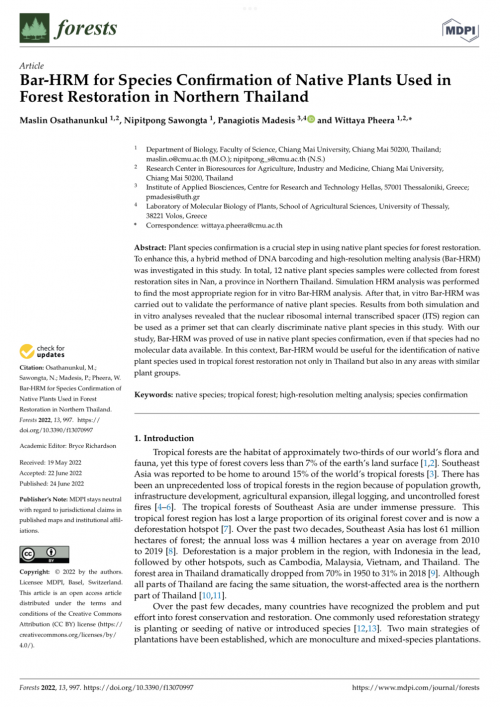Bar-HRM for Species Confirmation of Native Plants Used in Forest Restoration in Northern Thailand

ABSTRACT: Plant species confirmation is a crucial step in using native plant species for forest restoration. To enhance this, a hybrid method of DNA barcoding and high-resolution melting analysis (Bar-HRM) was investigated in this study. In total, 12 native plant species samples were collected from forest restoration sites in Nan, a province in Northern Thailand. Simulation HRM analysis was performed to find the most appropriate region for in vitro Bar-HRM analysis. After that, in vitro Bar-HRM was carried out to validate the performance of native plant species. Results from both simulation and in vitro analyses revealed that the nuclear ribosomal internal transcribed spacer (ITS) region can be used as a primer set that can clearly discriminate native plant species in this study. With our study, Bar-HRM was proved of use in native plant species confirmation, even if that species had no molecular data available. In this context, Bar-HRM would be useful for the identification of native plant species used in tropical forest restoration not only in Thailand but also in any areas with similar plant groups.
